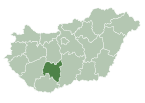
Hungary is a landlocked country in Central Europe. Spanning 93,030 square kilometres (35,920 sq mi) of the Carpathian Basin, it is bordered by Slovakia to the north, Ukraine to the northeast, Romania to the east and southeast, Serbia to the south, Croatia and Slovenia to the southwest, and Austria to the west. Hungary has a population of 9.5 million, mostly ethnic Hungarians and a significant Romani minority. Hungarian, a language belonging to the Ugric branch of the Uralic language family, is the official language, and Budapest is the country's capital and largest city.
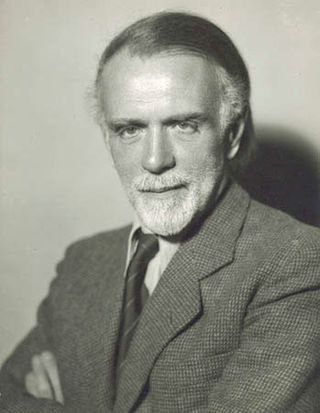
Zoltán Kodály was a Hungarian composer, ethnomusicologist, music pedagogue, linguist, and philosopher. He is well known internationally as the creator of the Kodály method of music education.

Miskolc is a city in northeastern Hungary, known for its heavy industry. With a population of 161,265 as of 1 January 2014, Miskolc is the fourth largest city in Hungary. It is also the county capital of Borsod-Abaúj-Zemplén and the regional centre of Northern Hungary.

Odorheiu Secuiesc is the second largest municipality in Harghita County, Transylvania, Romania. In its short form, it is also known as Odorhei in Romanian and Udvarhely in Hungarian. The Hungarian name of the town "Udvarhely" means "courtyard place".
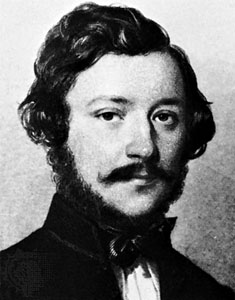
József baron Eötvös de Vásárosnamény was a Hungarian writer and statesman, the son of Ignác baron Eötvös de Vásárosnamény and Anna von Lilien, who stemmed from an Erbsälzer family of Werl in Germany. Eötvös name is sometimes anglicised as Joseph von Eotvos.

Tolna is an administrative county in present-day Hungary as it was in the former Kingdom of Hungary. It lies in central Hungary, on the west bank of the river Danube. It shares borders with the Hungarian counties of Somogy, Fejér, Bács-Kiskun, and Baranya. The capital of Tolna county is Szekszárd. Its area is 3,703 km2.

The Csángós are ethnic Hungarians of Roman Catholic faith living mostly in the Romanian region of Moldavia, especially in Bacău County. The region where the Csángós live in Moldavia is known as Csángó Land. Their traditional language, Csángó, a Hungarian dialect, is currently used by only a minority of the Csángó population group.

Békés is an administrative division in south-eastern Hungary, on the border with Romania. It shares borders with the Hungarian counties Csongrád, Jász-Nagykun-Szolnok, and Hajdú-Bihar. The capital of Békés county is Békéscsaba. The county is also part of the Danube-Kris-Mures-Tisa euroregion.
Boyash or Bayash are a Romani ethnic group living in Romania, southern Hungary, northeastern and northwestern Croatia, western Vojvodina, Slovakia, the Balkans, but also in the Americas. Alternative names are Rudari (Ludari), Lingurari and Zlătari.

Căbești is a commune in Bihor County, Crișana, Romania, around 13 kilometers north of the town of Beiuș.

Szakoly is a village in Szabolcs-Szatmár-Bereg county, in the Northern Great Plain region of eastern Hungary. It is 135 miles (217 km) to the east of Budapest and 21 miles (34 km) to the north east of Debrecen. It is home to the Szakoly Power Plant. Szakoly was first mentioned in 1290.

Balatonszárszó is a village along the southern shore of Lake Balaton in Somogy county, Hungary. The settlement is part of the Balatonboglár wine region, and belongs to the region of Southern Transdanubia. The village is famous for being the home and place of death of the renowned Hungarian poet József Attila.

Abaliget is a village in central Baranya County, Pécs District, in southern Hungary. Until the end of World War II, the inhabitants' majority was Danube Swabian, also called locally as Stifolder, because their ancestors arrived in the 17th and 18th centuries from Fulda (district). Most of the former German settlers were expelled to Allied-occupied Germany and Allied-occupied Austria in 1945–1948, pursuant to the Potsdam Agreement. Only a few Germans of Hungary live there, the majority today are the descendants of Hungarians from the Czechoslovak–Hungarian population exchange. They got the houses of the former Danube Swabian inhabitants. It is located in the western Mecsek Mountains. The nearby Abaliget Cave and the area's lakes and hiking trails make it a popular tourist destination. Its population at the 2011 Census was 598.

Bakonya is a village in central Baranya County, Pécs District, in southern Hungary. It is located in the western Mecsek mountain range and was the site of a uranium mine from the 1950s to 1989. Its population at the 2011 Census was 335.
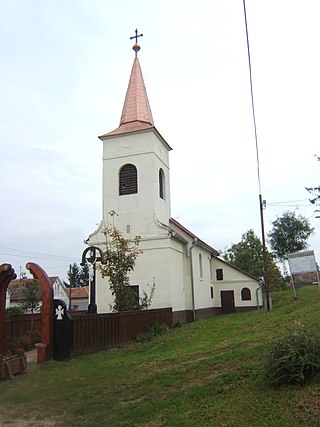
Cserdi is a village in Baranya county, Hungary. The town, with a population of around 350, is majority Roma. From 2006 to 2019 László Bogdán spearheaded a project that revitalized the town and its economy, becoming known as the "Cserdi miracle" and drawing international attention. The town is also the site of a geological formation.
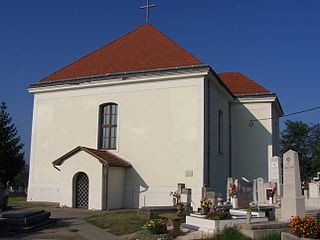
Maglód is a town in Pest County, Budapest metropolitan area, Hungary.

Aranyosgadány is a village in central Baranya County, Pécs District, in southern Hungary. It is located in the western Baranya Hills. It was established in 1941 with the merger of the settlements of Keménygadány and Pécsaranyos. Its population at the 2011 Census was 355.

Tamás Kenderesi is a Hungarian competitive swimmer who specializes in butterfly. He is an Olympics and European Championships bronze medalist, and Youth Olympics gold medalist swimmer.

Bonyhád is a district in southern part of Tolna County. Bonyhád is also the name of the town where the district seat is found. The district is located in the Southern Transdanubia Statistical Region.
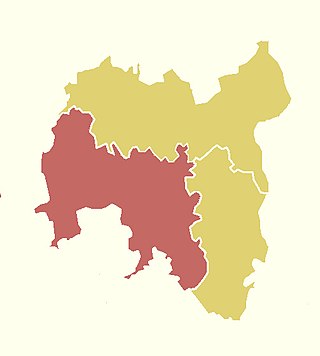
The 2nd constituency of Tolna County is one of the single member constituencies of the National Assembly, the national legislature of Hungary. The constituency standard abbreviation: Tolna 02. OEVK.





















